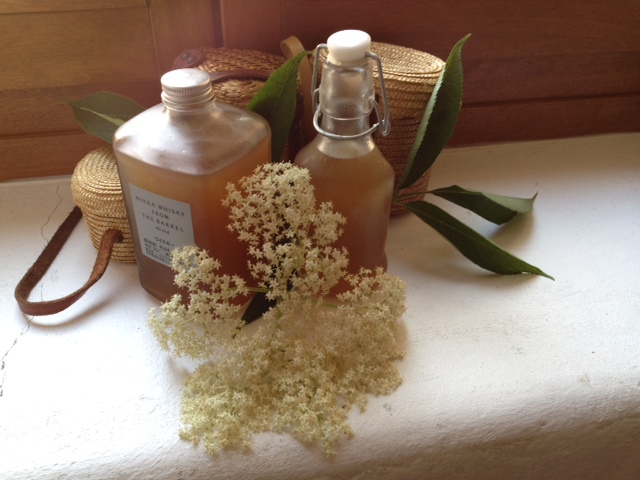
Moonrise seen from the Sooke Harbour House.
Photo: Peter Skillman
We were sitting at the Sooke Harbour House overlooking the Strait of Juan de Fuca of Vancouver Island, British Colombia, sipping a martini made from local ingredients: Sheringham Gin, Tugwell Creek Solstice Metheglin, Bittered Sling Lem Marakesh. I recognized very few of the words.
I’m more of a whisky person, but I’m coming around to gin these days. And this was a bright, nuanced gin martini with both floral and salty marine flavors, just like our surroundings. The garnish of a pickled fir tip was truly something I had never considered possible, much less tasted before.
We learned that Sheringham Gin was distilled just up the road from Sooke, in the community of Shirley. We decided to search for the distillery at the end the next day, after a lazy day of touring the coast by motorcycle, a pistachio and cream-colored dream re-issue of a vintage model. It’s been decades since I sat on the back of motorcycle, but I remember now how much fun it was.

Our ride: the Indian Chief Vintage.
We got a little lost looking for the road to the gin place, not that there are many roads; we were following verbal instructions from the night before rather than a map. We asked a couple of guys chatting roadside if they knew of a local gin distillery. They laughed as if that was a stupid question. Of course they did – this is the kind of place where everybody knows everyone.
Two double-backs later, we’d found our way – a steep-ish gravel road through forest and blackberry bushes heavy with fruit.

The view from Sheringham Distillery, Vancouver Island.
Photo: PKR
It’s always a joy to see people create their own slice of paradise. Here is a place that distillers Jason and Alayne MacIsaac have made just the way they want it: A hand-built house, a lush garden overlooking the water, and a craft distillery out the back. The real deal. There was a vintage custom motorcycle out front to complete the picture.
We just showed up with no warning on loud bikes, and we were offered an extremely warm welcome.
Both Jason and Alayne came out to greet us, and Jason took us on a tour of their establishment.
Like the majority of distillers on Vancouver Island (there are almost 40 of them), the MacIsaacs make their own alcohol. Jason says they prefer the taste of locally produced organic white wheat and malted barley, and gives us a sip to prove it. It’s fresh, like a cool breeze.
The gin recipe involves the addition of orris, angelica, coriander and juniper. With dashes of orange, lavender, rose petals and lemon – and a dash of hand-harvested local winged kelp(!). It might sound crazy, but we could taste every one of those ingredients. Lovely.
A further twist of the screw results in aqvavit, something I haven’t had in almost as long as I’ve been on a motorcycle. After tasting the Sheringham version, I’ll be returning to this drink more often.

Two of the Sheringham products.
When people talk about small craft distilleries, this is what they mean. It’s a lot of work and a massive amount of determination, but look at what it can bring forth. There is a commitment to authenticity, to quality, and to the life that goes with this work on every level.
I’m sorry to say we didn’t have time to visit the nearby Tugwell Creek winery to taste their honey mead – which is what the metheglin in that martini turned out to be.
Sheringham Distillers just started production over the past couple of years. Here’s hoping this is just the start of something beautiful.

Jason MacIsaac in front of the distillery.












































